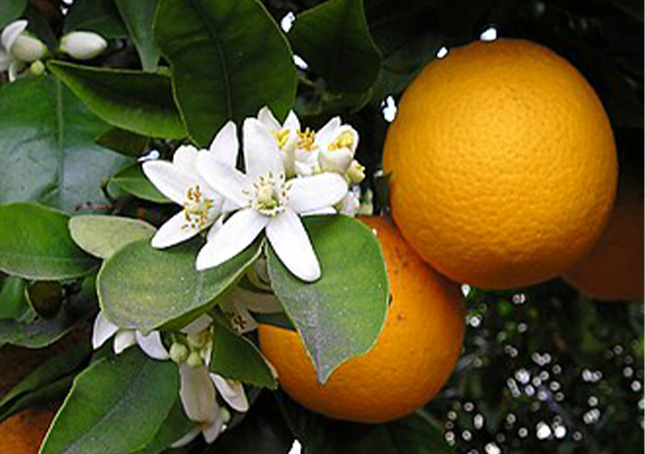Citrus

Citrus is a genus of flowering trees and shrubs in the rue family, Rutaceae. Plants in the genus produce citrus fruits, including important crops such as oranges, lemons, grapefruits, pomelos, and limes.
The genus Citrus is native to South Asia, East Asia, Southeast Asia, Melanesia, and Australia. Various citrus species have been utilized and domesticated by indigenous cultures in these areas since ancient times. From there its cultivation spread into Micronesia and Polynesia by the Austronesian expansion (c. 3000–1500 BCE); and to the Middle East and the Mediterranean (c. 1200 BCE) via the incense trade route, and onwards to Europe.
Citrus plants are native to subtropical and tropical regions of Asia, Island Southeast Asia, Near Oceania, and northeastern Australia. Domestication of citrus species involved much hybridization and introgression, leaving much uncertainty about when and where domestication first happened.
A genomic, phylogenic, and biogeographical analysis by Wu et al. (2018) has shown that the center of origin of the genus Citrus is likely the southeast foothills of the Himalayas, in a region stretching from eastern Assam, northern Myanmar, to western Yunnan. It diverged from a common ancestor with Poncirus trifoliata.
A change in climate conditions during the Late Miocene (11.63 to 5.33 mya) resulted in a sudden speciation event. The species resulting from this event include the citrons (Citrus medica) of South Asia; the pomelos (C. maxima) of Mainland Southeast Asia; the mandarins (C. reticulata), kumquats (C. japonica), mangshanyegan (C. mangshanensis), and ichang papedas (C. cavaleriei) of southeastern China; the kaffir limes (C. hystrix) of Island Southeast Asia; and the biasong and samuyao (C. micrantha) of the Philippines.
This was later followed by the spread of citrus species into Taiwan and Japan in the Early Pliocene (5.33 to 3.6 mya), resulting in the tachibana orange (C. tachibana); and beyond the Wallace Line into Papua New Guinea and Australia during the Early Pleistocene (2.5 million to 800,000 years ago), where further speciation events occurred resulting in the Australian limes.
The earliest introductions of citrus species by human migrations was during the Austronesian expansion (c. 3000–1500 BCE), where Citrus hystrix, Citrus macroptera, and Citrus maxima were among the canoe plants carried by Austronesian voyagers eastwards into Micronesia and Polynesia.
